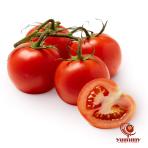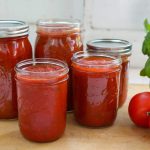browning tomato paste + purchase price, uses and properties
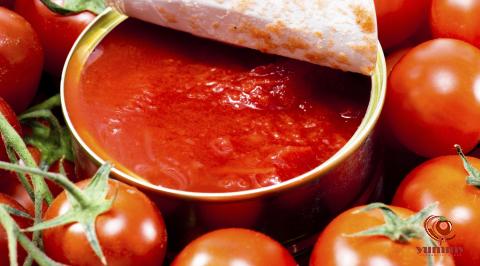
Tomato paste is a staple ingredient in many cuisines around the world, known for its rich umami flavor and versatility in cooking. However, if you’ve ever opened a can or jar of tomato paste only to find it has turned brown or darkened in color, you may be wondering why this happens and whether it is still safe to eat. In this comprehensive guide, we will delve into the science behind browning tomato paste, exploring the causes, effects, and offering culinary tips to help you make the most of this beloved pantry essential. Understanding Browning in Tomato Paste Browning in tomato paste occurs due to a complex series of chemical reactions that take place when the paste is exposed to heat, oxygen, and acidity.

.
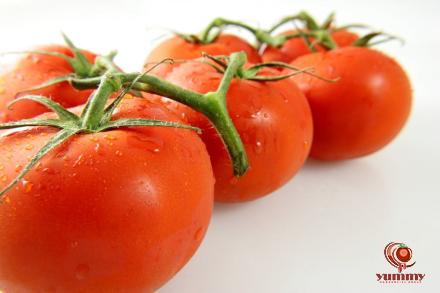 The primary culprit behind this phenomenon is a process known as the Maillard reaction, named after the French chemist Louis-Camille Maillard who first described it in the early 20th century. The Maillard reaction occurs when amino acids (proteins) and reducing sugars in the tomato paste react at high temperatures, resulting in the characteristic browning, aroma, and flavor changes. This reaction is responsible for the delicious caramelization that occurs when you sauté onions, sear meats, or bake pastries. Factors That Contribute to Browning Several factors can contribute to the browning of tomato paste: 1. Heat: High temperatures accelerate the Maillard reaction, leading to faster browning. This is why you may notice that tomato paste darkens more quickly when exposed to direct heat, such as when sautéing or roasting.
The primary culprit behind this phenomenon is a process known as the Maillard reaction, named after the French chemist Louis-Camille Maillard who first described it in the early 20th century. The Maillard reaction occurs when amino acids (proteins) and reducing sugars in the tomato paste react at high temperatures, resulting in the characteristic browning, aroma, and flavor changes. This reaction is responsible for the delicious caramelization that occurs when you sauté onions, sear meats, or bake pastries. Factors That Contribute to Browning Several factors can contribute to the browning of tomato paste: 1. Heat: High temperatures accelerate the Maillard reaction, leading to faster browning. This is why you may notice that tomato paste darkens more quickly when exposed to direct heat, such as when sautéing or roasting.
..
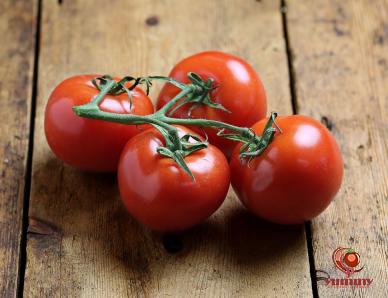 2. pH Level: The acidity of the tomato paste can also influence browning. Acidic conditions can enhance the Maillard reaction, resulting in a deeper color and more intense flavor. Conversely, alkaline environments may inhibit browning. 3. Oxygen Exposure: Oxidation plays a role in browning as well. When tomato paste is exposed to oxygen, especially over a prolonged period, the compounds responsible for browning can react further, leading to darkening and flavor changes. Effects of Browning on Tomato Paste While browning in tomato paste is a natural and harmless process, it can affect the taste, appearance, and nutritional content of the product. Here are some effects of browning to be aware of: 1. Flavor Changes: Browning can impart a richer, more complex flavor to the tomato paste, as the Maillard reaction produces new aromatic compounds. However, excessive browning can also lead to bitter notes and a less desirable taste. 2. Color Alteration: The most noticeable effect of browning is the change in color from bright red to a deeper, darker shade. While this does not necessarily indicate spoilage, it may impact the visual appeal of dishes prepared with browned tomato paste. 3. Nutritional Impact: The Maillard reaction can cause some loss of nutrients in tomato paste, particularly heat-sensitive vitamins like vitamin C. While the nutritional difference is generally minor, it is something to consider if you rely on tomato paste as a source of vitamins and minerals. Preventing and Managing Browning If you prefer to maintain the vibrant red color of tomato paste or reduce browning in your dishes, there are several strategies you can employ: 1. Store Properly: To minimize oxidation and prevent browning, store tomato paste in an airtight container in the refrigerator after opening. Avoid leaving it exposed to air for extended periods. 2. Use Fresh Paste: Fresher tomato paste is less likely to have undergone significant browning reactions. Check the expiration date on the packaging and choose high-quality products for optimal results. 3. Control Heat: When cooking with tomato paste, be mindful of the heat levels to prevent excessive browning. Consider adding the paste later in the cooking process or using lower temperatures for a more gradual color change.
2. pH Level: The acidity of the tomato paste can also influence browning. Acidic conditions can enhance the Maillard reaction, resulting in a deeper color and more intense flavor. Conversely, alkaline environments may inhibit browning. 3. Oxygen Exposure: Oxidation plays a role in browning as well. When tomato paste is exposed to oxygen, especially over a prolonged period, the compounds responsible for browning can react further, leading to darkening and flavor changes. Effects of Browning on Tomato Paste While browning in tomato paste is a natural and harmless process, it can affect the taste, appearance, and nutritional content of the product. Here are some effects of browning to be aware of: 1. Flavor Changes: Browning can impart a richer, more complex flavor to the tomato paste, as the Maillard reaction produces new aromatic compounds. However, excessive browning can also lead to bitter notes and a less desirable taste. 2. Color Alteration: The most noticeable effect of browning is the change in color from bright red to a deeper, darker shade. While this does not necessarily indicate spoilage, it may impact the visual appeal of dishes prepared with browned tomato paste. 3. Nutritional Impact: The Maillard reaction can cause some loss of nutrients in tomato paste, particularly heat-sensitive vitamins like vitamin C. While the nutritional difference is generally minor, it is something to consider if you rely on tomato paste as a source of vitamins and minerals. Preventing and Managing Browning If you prefer to maintain the vibrant red color of tomato paste or reduce browning in your dishes, there are several strategies you can employ: 1. Store Properly: To minimize oxidation and prevent browning, store tomato paste in an airtight container in the refrigerator after opening. Avoid leaving it exposed to air for extended periods. 2. Use Fresh Paste: Fresher tomato paste is less likely to have undergone significant browning reactions. Check the expiration date on the packaging and choose high-quality products for optimal results. 3. Control Heat: When cooking with tomato paste, be mindful of the heat levels to prevent excessive browning. Consider adding the paste later in the cooking process or using lower temperatures for a more gradual color change.
…
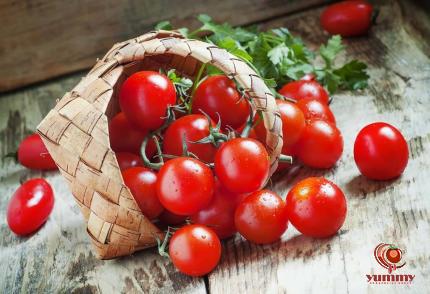 4. Adjust Acidity: If you find that your tomato paste consistently browns too quickly, you can experiment with adjusting the acidity levels in your recipe. Adding a touch of vinegar or lemon juice may help regulate browning. 5. Blend or Strain: For recipes where the appearance of tomato paste is crucial, such as in sauces or dips, you can blend or strain the paste to achieve a smoother consistency and mask any browning that has occurred. Culinary Tips for Using Browning Tomato Paste While some may view browned tomato paste as a sign of undesirable quality, others appreciate the depth of flavor it adds to dishes. Here are some culinary tips for making the most of browned tomato paste: 1. Flavor Booster: Embrace the rich, caramelized notes of browned tomato paste by using it as a flavor enhancer in stews, soups, and braises. The intensified umami taste can elevate the overall dish. 2. Sauce Base: Incorporate browned tomato paste into pasta sauces, curry bases, or marinades for a more complex flavor profile. Pair it with aromatic herbs and spices to balance the sweetness and bitterness. 3. Meat Dishes: Browned tomato paste can be a standout ingredient in meat dishes such as chili, meatloaf, or spaghetti bolognese. Its concentrated flavor blends well with hearty proteins and adds depth to the dish. 4. Umami Bomb: To heighten the umami factor in vegetarian or vegan recipes, browned tomato paste can be a game-changer. Use it in bean dishes, roasted vegetables, or savory pies for an extra savory kick. 5. Gravy and Stocks: Add a dollop of browned tomato paste to gravies, broths, or stocks to enhance their richness and depth of flavor. Simmer it with aromatics and liquids for a well-rounded taste.
4. Adjust Acidity: If you find that your tomato paste consistently browns too quickly, you can experiment with adjusting the acidity levels in your recipe. Adding a touch of vinegar or lemon juice may help regulate browning. 5. Blend or Strain: For recipes where the appearance of tomato paste is crucial, such as in sauces or dips, you can blend or strain the paste to achieve a smoother consistency and mask any browning that has occurred. Culinary Tips for Using Browning Tomato Paste While some may view browned tomato paste as a sign of undesirable quality, others appreciate the depth of flavor it adds to dishes. Here are some culinary tips for making the most of browned tomato paste: 1. Flavor Booster: Embrace the rich, caramelized notes of browned tomato paste by using it as a flavor enhancer in stews, soups, and braises. The intensified umami taste can elevate the overall dish. 2. Sauce Base: Incorporate browned tomato paste into pasta sauces, curry bases, or marinades for a more complex flavor profile. Pair it with aromatic herbs and spices to balance the sweetness and bitterness. 3. Meat Dishes: Browned tomato paste can be a standout ingredient in meat dishes such as chili, meatloaf, or spaghetti bolognese. Its concentrated flavor blends well with hearty proteins and adds depth to the dish. 4. Umami Bomb: To heighten the umami factor in vegetarian or vegan recipes, browned tomato paste can be a game-changer. Use it in bean dishes, roasted vegetables, or savory pies for an extra savory kick. 5. Gravy and Stocks: Add a dollop of browned tomato paste to gravies, broths, or stocks to enhance their richness and depth of flavor. Simmer it with aromatics and liquids for a well-rounded taste.


 Phone number:
Phone number:  WhatsApp Response:
WhatsApp Response:








